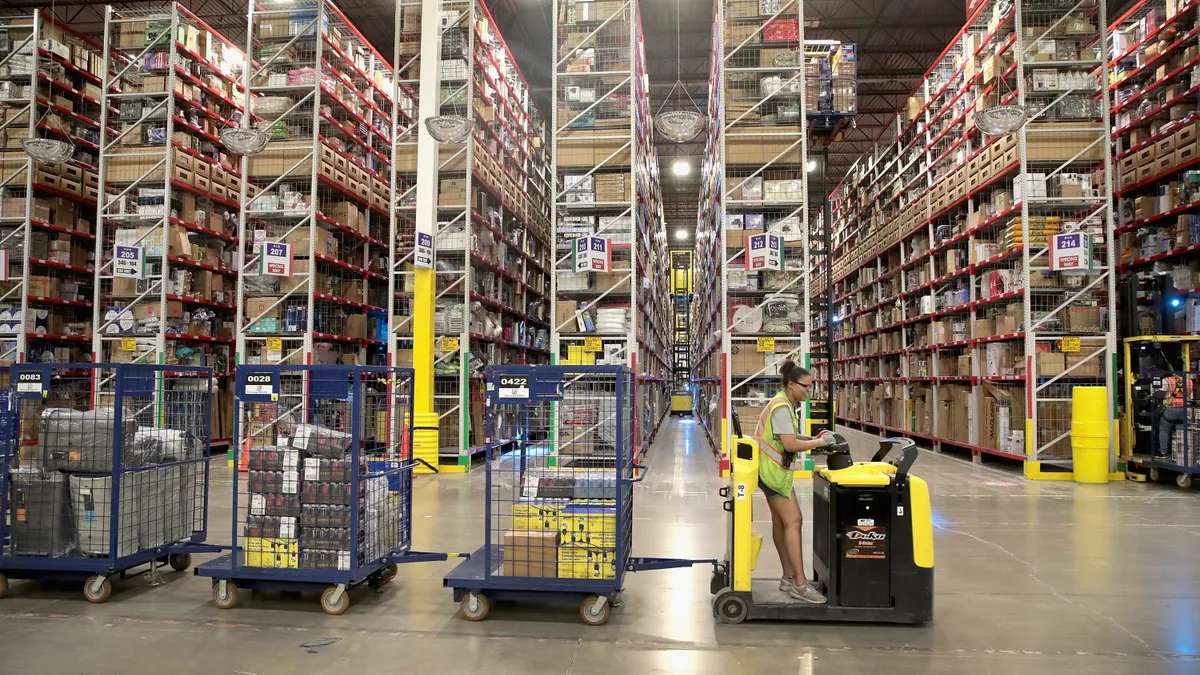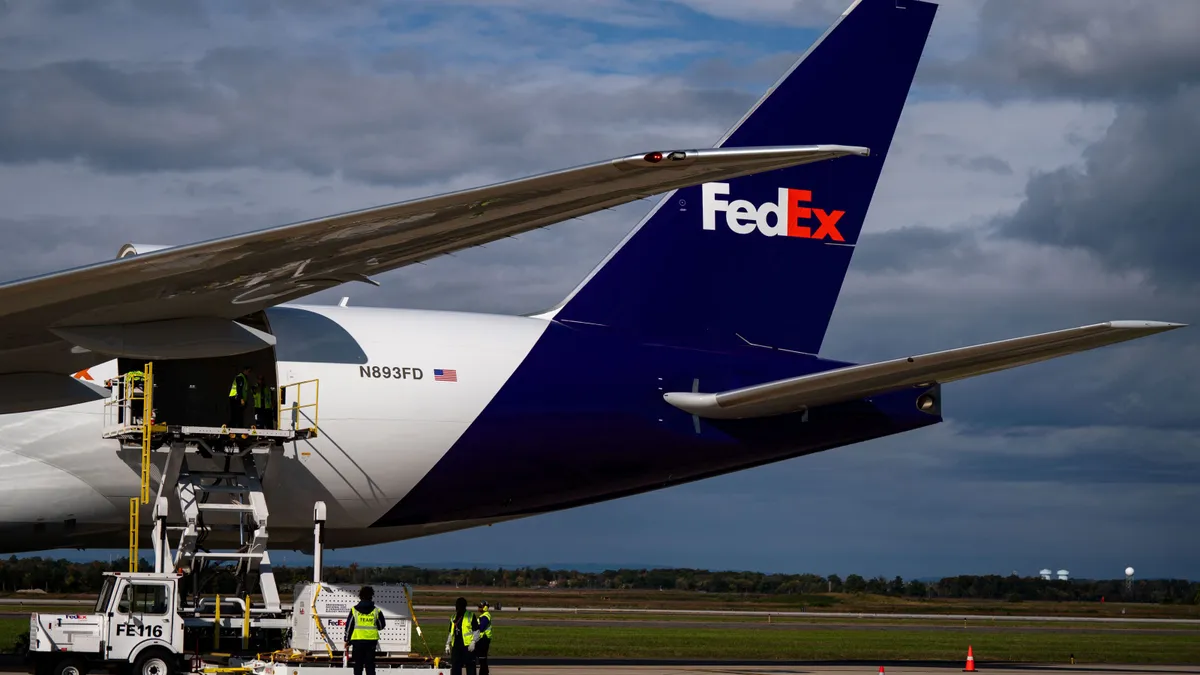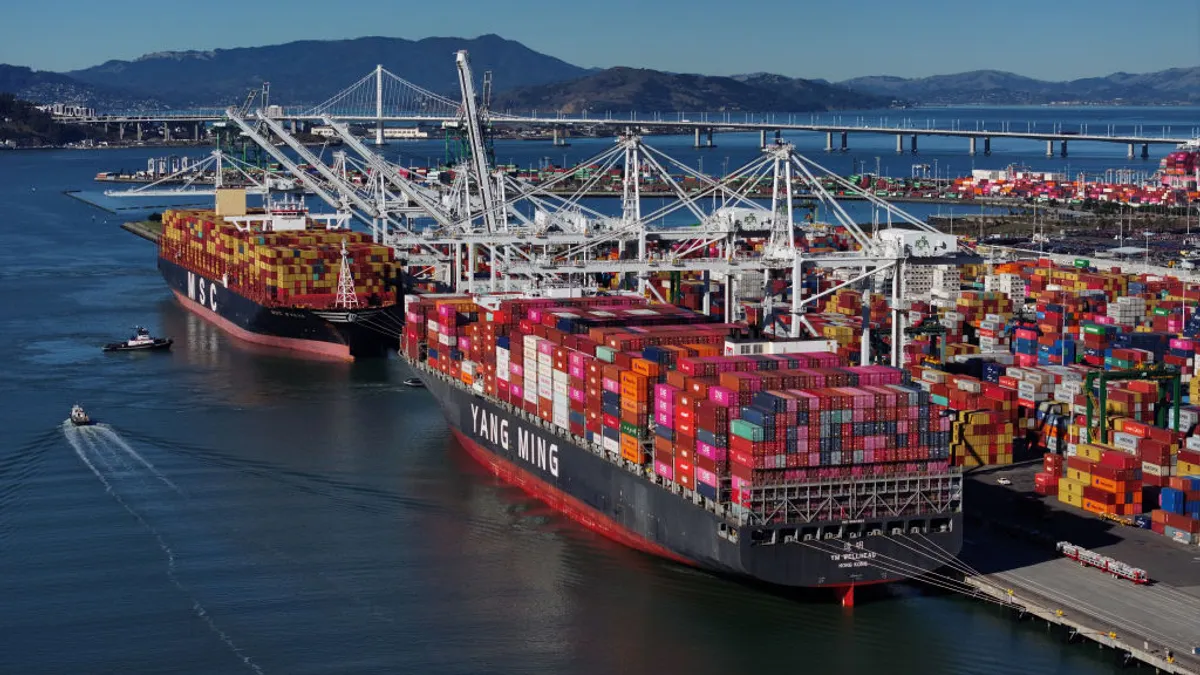SEATTLE — Amazon's new end-to-end suite of supply chain services has plenty of growth ahead of it, executives said at the company's annual third-party seller conference Wednesday.
Supply Chain by Amazon, which handles logistics from manufacturing facilities to customer delivery, launched this week for sellers to use across all their sales channels. Company leaders detailed its current limitations and long-term expansion plans during multiple sessions at Amazon Accelerate.
Here are five key takeaways from the conference about Supply Chain by Amazon, what it offers now and what it could offer in the near future.
There are some limitations — for now
Although some services within Supply Chain by Amazon can be used beyond the U.S., Supply Chain by Amazon in its entirety is U.S. only, said Dhananjay Ramaswamy, director of product management for global shipping at Amazon.
"We are working on building the network and perfecting it, but we will of course be looking at other destinations in the near future," Ramaswamy said.
Certain product categories are not yet supported by Supply Chain by Amazon, including perishables, items that contain potentially dangerous substances or materials and bulky, "non-sortable" goods that can't be stored in boxes, said David Barashi, an executive for Amazon Warehousing and Distribution, its long-term storage service that’s part of Supply Chain by Amazon. Those products can still be placed directly into Fulfillment by Amazon, the company's fulfillment offering for sellers, however.
Amazon is working to make more of these products eligible for its end-to-end offering.
Amazon is touting its ocean shipping reliability
Amazon Global Logistics, part of the company’s end-to-end supply chain offering, handles cross-border transportation for sellers.
Year-to-date, 84% of Amazon Global Shipping's shipments have arrived at or before the promised arrival date at the time of booking, according to Hernan Zini, director of logistics services at Amazon Global Logistics.
"We can partner with carriers that have a very good reliability and very good speed on ocean freight," Zini said.
This gives sellers an added incentive to use Supply Chain by Amazon, rather than leaning on a separate company to bring products into the Amazon's fulfillment network, Ramaswamy said.
"Why would you want to walk away from 84% on-time arrivals? Why would you want to walk away from the ability to integrate the entire supply chain and get the benefit all the way from the origin end to end?" Ramaswamy said.
More origin points beyond China will be added
Amazon Global Logistics currently allows sellers to ship cargo from mainland China and Hong Kong to Amazon facilities in the U.S., UK and EU.
"There was a reason for that," Zini said. "We wanted to make sure we get it right before we start scaling and spreading our products across the globe."
Next year, sellers can expect an announcement from Amazon on new countries of origin to ship cargo from, Zini said. Vietnam has been a frequent request and will likely be an addition for Amazon Global Logistics in the near future, he added.
Amazon is encouraging shipments into East Coast ports
Amazon Global Logistics is offering sellers lower prices to ship their products from China to the U.S. East Coast, rather than to the West Coast, Zini said. While ocean freight transit times typically take 7 to 10 days longer to get to New York instead of Los Angeles, it's worth it to quickly meet East Coast consumer demand, he added.
"Once the container arrives there, we can move it very fast into the fulfillment centers on the East Coast so you are regionally, or locally, in stock," Zini said.
Zini also highlighted risks regarding congestion at West Coast ports, which was a frequent problem when imports surged during the COVID-19 pandemic.
"I think it's particularly important to diversify, and having goods coming into both sides of the country could be a good way for you to manage any risk," he said.
Storage service won't have peak fee increases
Amazon Warehousing and Distribution features much lower storage costs compared to the seller fulfillment service Fulfillment by Amazon, Ramaswamy said. This is because while Fulfillment by Amazon focuses on getting orders to customers quickly, Amazon Warehousing and Distribution provides long-term storage for bulk inventory.
The service, now open to all sellers, won't have increased storage fees during peak season. This will allow sellers to store plenty of inventory at a reduced cost as they prepare for the holiday ordering rush, Ramaswamy said.
Additionally, Amazon is piloting whether sellers can reserve storage space guaranteeing them access to long-term capacity months in advance, said Barashi, the Amazon Warehousing and Distribution executive.
"We continue to invest in [Amazon Warehousing and Distribution], and we are planning to add significantly more capacity in the next 12 months to make sure we meet all your needs," Barashi said.























